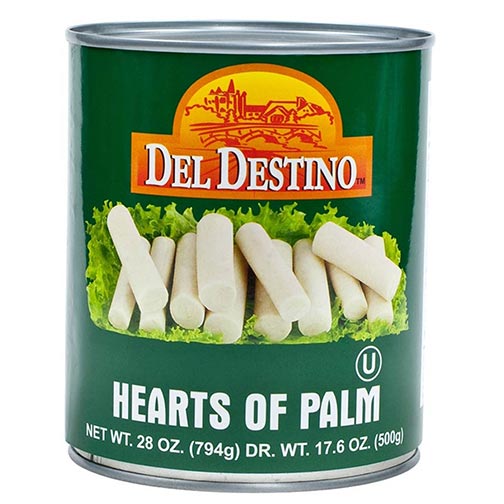
Whether it’s ethical or not to eat hearts of palm depends largely on where it comes from. Pixabay Is it ethical to eat hearts of palm? “ part of a government strategy to give communities a safe, sustainable, and profitable livelihood,” she writes for Saveur. “Although there are regulations in place in many regions to protect the palm populations, some countries, like Brazil, have a history of illegal palm harvesting,” the platform notes.īut, according to the chef, food stylist, and author Mariana Velasquez, who grew up eating hearts of palm in Colombia, in Putumayo, Southern Colombia, the government has actually used hearts of palm cultivation to incentivize people to move away from illegal activities associated with coca crops (coca leaves are the raw material for making cocaine). If the ingredient is sourced from a palm tree with just one stalk, this will kill the tree. If hearts of palm is taken from a tree with several stalks using responsible harvesting practices, they can be sourced without killing the tree and the tree can be left to regenerate. It is possible to harvest hearts of palm in a sustainable way, but producers must pay attention to several factors, one of the most important elements being the species of palm tree they are using.Īccording to the research-based sustainability platform Citizen Sustainable, hearts of palm can be sourced from peach palms or acai palms, both of which have several stalks, or jucara palms, coconut palms, and sabal palms, all of which just have one single stalk. Hearts of palm has been linked with environmental damage, but it’s important not to conflate the ingredient with palm oil. While plant-based foods are, on the whole, more sustainable than animal products, they are not always perfect. Thus, all these health benefits have increased the demand for packaged hearts of palm market.” How are hearts of palm harvested? The vegetable also consists of vitamins A and K, which are required for a healthy scalp and hair. “It is also a rich source of zinc, which helps in the quick recovery of wounds.

“ is highly nutritious, as well as an important source of dietary fiber,” notes the firm. According to market research firm The Insight Partners, this is due to the changing lifestyles of many consumers, who are looking for healthy and nutritious plant-based foods. The market for hearts of palm is steadily growing. And in Colombia, they’re a key ingredient in palmitos gratinados, which is basically hearts of palm loaded with heavy cream and cheese. In Mexico, they’re often marinated and eaten with lime juice and powdered pepper as an appetizer, according to the recipe blog Mexico In My Kitchen. While they can be used to make vegan seafood, like lobster, scampi, and crab, they are also frequently added to stews, salads, and tacos, too. After they have been harvested, they are usually cut into small chunks and packed into cans and jars, often with brine. Hearts of palm are taken from the tender, inner core of several palm tree species. Ilene Godofsky Moreno What are hearts of palm? This is, in part, because it’s a very convincing seafood alternative, thanks to its mild taste and slightly firm, flaky texture.īut considering the issues associated with palm tree cultivation, is it ethical to eat hearts of palm? It turns out, it depends on a few factors, including how it’s sourced. Hearts of palm has been eaten for centuries across South America, Central America, and Southeast Asia, but lately the ingredient-which, as the name suggests, is sourced from the middle of palm trees-has started to rise in popularity across the West. But it’s not the only product that comes from palm trees. The oil-which is used in everything from food to beauty products-has been linked with the destruction of some of the world’s most biodiverse forests, which are also home to many endangered species.


The link between palm oil and deforestation has been well-documented in recent years.


 0 kommentar(er)
0 kommentar(er)
